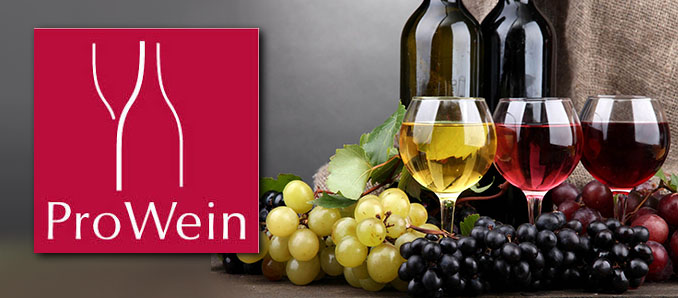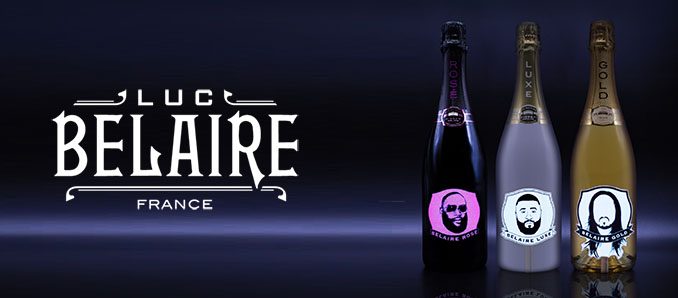By Stuart Pigott and Paula Sidore
 Wine boasts 6,000 years of documented history and a reputation woven in tradition and mystique. It’s an unlikely candidate for wholesale change. Yet the developing face of what we like to call The New Freshness is surprisingly dynamic and truly shaking things up. Young consumers are leading this break with the past, seeking out wines with a focus on fun and relaxation, unfettered by complex rituals and the hierarchies they serve. And as a result, many winemakers are now actively optimizing balance and drinkability; and emerging brand identities are choosing to prioritize elegance over power.
Wine boasts 6,000 years of documented history and a reputation woven in tradition and mystique. It’s an unlikely candidate for wholesale change. Yet the developing face of what we like to call The New Freshness is surprisingly dynamic and truly shaking things up. Young consumers are leading this break with the past, seeking out wines with a focus on fun and relaxation, unfettered by complex rituals and the hierarchies they serve. And as a result, many winemakers are now actively optimizing balance and drinkability; and emerging brand identities are choosing to prioritize elegance over power.
The New Freshness is all about wines which taste lighter and more lively thanks to their bright aromas, moderate alcoholic content, crisp acidity and/or softer tannins. And while there have been a number of prophets over the last decade signaling the new direction, in 2018 we find a sea change occurring in everything from harvesting times to viticultural techniques all the way through to marketing. The result — beyond a more refreshing taste — is a more authentic expression of the grape variety/varieties and often a clearer sense of place. In a nutshell, the rising influence of region and culture of origin have become the twin columns that support wine brand identity.
It is now apparent that the shift from conventional viticulture willing to deploy chemicals where necessary to organic and biodynamic viticulture in recent years was often not only about respecting the environment, but also a tool for changing wine styles. Look to the dry white wines of renowned Austrian producer Fred Loimer (Kamptal/Austria) of Weingut Loimer whose transition to biodynamics brought about a stylistic transformation toward crisper yet correspondingly more complex flavors. Moving to biodynamic cultivation, says Bernhard Ott of the eponymous winery in Wagram/Austria, reduced the alcoholic content of his Grüner Veltliners an average of one full degree and increased their acidity content by a corresponding amount. “I much prefer my new wines, because they’re so much fresher and more precise in character.” The wines will be presented in hall 17 of the Düsseldorf fairground, which is the Austrian hall at ProWein 2018.
Like every other truly global wine trend before it The New Freshness is partly a reaction to the previous mega-trend. We call that The Old Heaviness and it’s now clear to us that it peaked just under a decade ago. Massive body and high alcoholic content, scant acidity and a jammy fruit character were the hallmarks of wines that made a bold statement, but were often difficult to drink more than a glass of. These supposedly hedonistic wines were actively promoted by the most influential wine critics of the last generation, but were also routinely lauded by countless wine experts, importers and consumers in markets around the world.
When The Old Heaviness was at its peak, it seemed that a new wine couldn’t have too much alcohol, taste too sweet, or contain too much oak aroma. At that time some expensive “dry” reds tasted like they belonged in the liqueur cabinet rather than on the dining table. Now, the mood of wine professionals and consumers has shifted dramatically and all that opulence seems so very late 20th century.
The story of this new style begins with the grape grower striving for vineyards with a healthy balance between vigor and fruiting. German winemaker Gesine Roll of Weingut Weedenborn in Rheinhessen (hall 14, booth A 40) says that in pursuit of a clean, fresh and more drinkable style, she has shifted the focus in her vineyards on achieving fully ripe – but never overripe – fruit. “This counts not only for harvest but throughout the whole year. I’d rather be a day too early than a day too late. It can make all the difference.” What a contrast to the days of The Old Heaviness when vineyards were often deliberately stressed to increase flavor intensity and concentration in the drive to achieve ever higher scores from influential critics. For wine production at the lower end of the price scale, vineyards bore large crops and were harvested late so that the grapes would ripen enough to give the rich flavors that were in fashion at that time. Both these strategies frequently resulted in wines that tasted over-ripe and flabby; the opposite to the hallmarks of the new wines!
This transformation for the global wine industry isn’t only about the move away from such dubious production methods though, and we see parallel changes both in the fields of marketing and in new patterns of consumption that are rapidly developing. The new wines can be opened on release, with or without food, and are ideally suited to the new young urban middle classes of the BRIC countries and many other emerging wine markets. Think a hybrid Prius lined up next to the Mustangs of yore — a different beast entirely from the over-ripe and over-concentrated wines typical of The Old Heaviness, also a world away from old guard consumers and their status-orientated drinking patterns.
This reaction to the old order began in earnest just after the turn of the last century and it spread steadily around the world. The first prophets of The New Freshness seemed like a motley crew of freethinkers obsessed with cool climate wine regions ranging from Germany to New Zealand where growing conditions tended to naturally deliver lighter and fresher wines. They included producers as diverse as Roland Velich of Weingut Moric in Burgenland/Austria, Dominik Huber of Terroir al Limit in Priorat/Catalonia and Steffen Christmann of Weingut Christmann in the Pfalz/Germany (hall 14, booth E 30).
While they were dismissed at first as eccentrics, their importance and influence grew as the new movement rapidly gained momentum from 2010. Five years later the wine industries of even a number of warm New World, and traditionally even very warm Old World regions in Europe had recognized and embraced this metamorphosis taking place on Planet Wein and switched their collective goal from The Old Heaviness to The New Freshness. Some Spanish regions with climates normally regarded as warm are building reputations based on the vitality and liveliness of their wines. The steely precision and cool clarity of the dry whites of Rueda producers such as Finca Montepedroso and Finca Caserio de Dueñas, for example, have set a high and welcome benchmark. And in Madrid, Bodegas Maranones is giving new life to fresh, bright garnachas. With vineyards in Rioja, Navarra and Valencia, Spanish wine producer Artadi has stylistically reoriented itself to reflect a transparency of fruit and finesse. The new spirit can also be found in regions stretching right across Australia, from the traditional cool climate strongholds of Margaret River in Western Australia to Mac Forbes Wines in Yarra Valley in Victoria. Even in Napa Valley, producers are pulling back from the opulent style that the Cult Cabernets made cool in the early years of the century.
All of this has implications that reach far beyond the technical fields of wine production and marketing. In today’s globalized, interconnected world every wine has a story to tell. Yet when the flavors are too loud, lush, or all taste the same then the real story is lost in the noise. Listen closely, for the stories these new wines have to tell is clear, distinctive and entirely their own.







